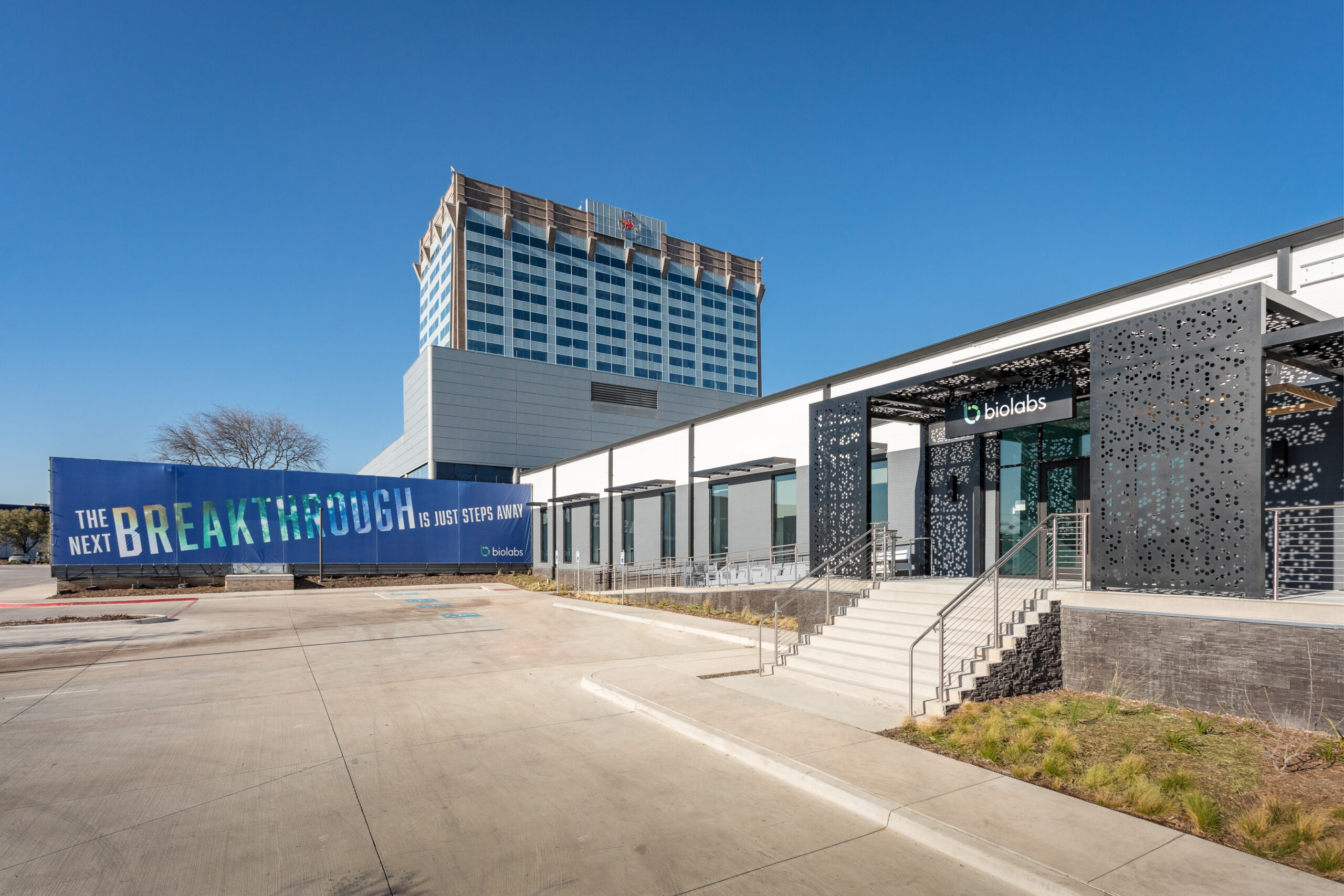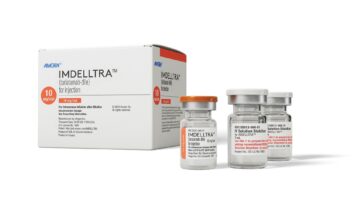
In his State of the Union address this year, President Biden said that he directed his cabinet to review the federal classification of cannabis. This direction – following two other government recommendations — including a letter sent by 12 senators including Senate Majority Leader Chuck Summer to the Drug Enforcement Administration (DEA) in January and the U.S. Department of Health and Human Services’ recommendation to the DEA in August of last year to reschedule cannabis – could mean momentum is building for this much needed change.
Momentum gives me hope that we are a step closer to reclassifying cannabis from a Schedule I substance, reserved for the most dangerous controlled drugs including heroin and LSD, to a Schedule III substance, drugs with a moderate to low potential for physical and psychological dependence, such as ketamine, testosterone, and Tylenol with codeine.

BioLabs Pegasus Park Cultivates Life Science Ecosystem
Gabby Everett, the site director for BioLabs Pegasus Park, offered a tour of the space and shared some examples of why early-stage life science companies should choose North Texas.
Rescheduling cannabis would mean significant changes for healthcare on several fronts:
- Most importantly, it would open the floodgates for clinical research to show scientific evidence of the medical benefits of cannabis.
- By reducing its stigma and the risk of arrest, reclassifying cannabis would knock down one of the biggest obstacles that prevent patients and their caregivers from openly engaging in conversations with clinicians in mainstream medicine about their use.
- And it could reduce barriers to access for patients suffering from cancer pain and treatment-related symptoms, chronic pain, and other serious conditions.
Despite growing acceptance and legalization in 40 states, there still exists a significant level of negative perception and misinformation about cannabis as a medical therapy because it’s still classified as a Schedule I drug.
As a director of supportive oncology services, I see firsthand how the confusion and mistrust around medical cannabis plays out for my cancer patients and their families. Prior to establishing a need blind, interprofessional cannabis clinic, most patients would use cannabis without medical guidance or feeling safe discussing this interest with providers. We have seen over 1,000 patients with cancer and those in survivorship between the ages of 18-95 who expressed interest in using cannabis to reduce their symptom burden. The ask is universal: help me understand what cannabis can help me with, what it can’t and what I can safely use.
Medical cannabis is not always accessible for many of my patients because there are myriad hurdles to access, from digital literacy issues to financial toxicity of cancer treatment. As a Schedule I substance, cannabis is not covered by health insurance; it’s an out-of-pocket expense that cannot be purchased with a credit card. As a result, some of my patients buy street marijuana, which is not only illegal but leaves me in the dark about what they’ve purchased, how they use it, and how it could affect their health.
My patients are just a microcosm of the problem. Currently 40-50 percent of cancer patients in the U.S. use cannabis to manage cancer symptoms, and many say it’s confusing and expensive, and there is no medical oversight. Many of these patients are alone, with inadequate information, when they are at their most vulnerable.
The American Society of Clinical Oncology’s Journal of Clinical Oncology, just published guidelines recently for clinicians, adults with cancer, caregivers, researchers, and oncology institutions on the medical use of cannabis and cannabinoids, including synthetic cannabinoids and herbal cannabis derivatives; single, purified cannabinoids; combinations of cannabis ingredients; and full-spectrum cannabis. They highlight the critical need for more cannabis and/or cannabinoid research.
Cannabis as part of cancer care has been a topic of great interest for years. In fact, in 2019, The Journal of Palliative Medicine, published a research study called “Relationship of Cannabis Use to Patient-Reported Symptoms in Cancer Patients Seeking Supportive/Palliative Care.” The study concluded that patients seeking specialized symptom management are self-treating with cannabis, despite the lack of high-quality evidence for its use in palliative care. Unsanctioned use is likely to increase in cancer patients. Accurate information is urgently needed to help manage patient expectations for its use and increase understanding of risks and benefits.
Once cannabis is reclassified, the uncertainty and lack of clarity will change. Clinical research will help us understand the benefits and risks associated with cannabis use. The well done, rigorous, scientific evidence of the medical benefit of cannabis will be the primary catalyst for change in the medical community’s attitudes and practices around cannabis care. In addition, here are two initiatives we can take to ensure more effective cannabis use by our patients – starting right now:
- Meet the need for more education and training to increase clinicians’ comfort in discussions with their patients about the use of cannabis for medical purposes. While medical use of cannabis is on the rise across the United States, medical education and clinician comfort discussing cannabis use for medical purposes have not kept pace. For instance, according to a study I co-authored, of the 344 clinicians in the state of Pennsylvania we surveyed, only 51% of clinicians reported completing any formal training on medical cannabis. Compared with non-certifying clinicians (pharmacists, nurse practitioners, and physician assistants), physicians were significantly more comfortable with patient use of medical cannabis, saw fewer risks, more benefits, and felt better prepared to discuss its use with vulnerable populations. All clinicians noted significant limitations to their understanding of how medical cannabis can affect patients, and many indicated a desire for more research and training to fill in gaps in their knowledge.
- Open lines of communications between clinicians and patients about their use of cannabis along with other drugs. It is important to assess the use of medical cannabis along with other medications when assessing for polypharmacy, i.e., the use of five or more medications. However, while more patients are using cannabis, little is known about how often they use it with other medications. This needs to change. It is best to continually check in with patients to reassess their use of medical cannabis products, given the high rate of variability of what products people are using in different time periods.
I believe that if we work together, these initiatives, along with others that have been studied, can be established as best practices that make medical cannabis safer and more effective for patients suffering from cancer symptoms, chronic pain, insomnia and anxiety.
In a post-rescheduling world, all of us – providers, health plans, employers, regulators, financial institutions, and investors – must make it our mission to work together to begin building out a responsible, regulated and structured industry where clinically guided medical cannabis care is accessible and affordable for all.
The Drug Enforcement Agency’s decision to reclassify cannabis to a Schedule III drug would mark a watershed moment in the cannabis market, but it does not immediately solve for our lack of data, issues with equitable access, consistent quality, and appropriate clinical and regulatory oversight. It’s the first step in a long process to establish a new normal for medical cannabis care. I’m optimistic that collectively we have the wherewithal to pull together to put medical cannabis into mainstream healthcare.
Photo: Ivan-balvan, Getty Images
A pioneering palliative care clinician and researcher, Dr. Brooke Worster is currently Director, Supportive Oncology at Jefferson Health in Philadelphia and and Chief Medical Officer at EO Care. She is a graduate of Temple University School of Medicine and completed her fellowship in palliative care and pain management at MGH Brigham and Dana Farber Cancer Center in Boston.















